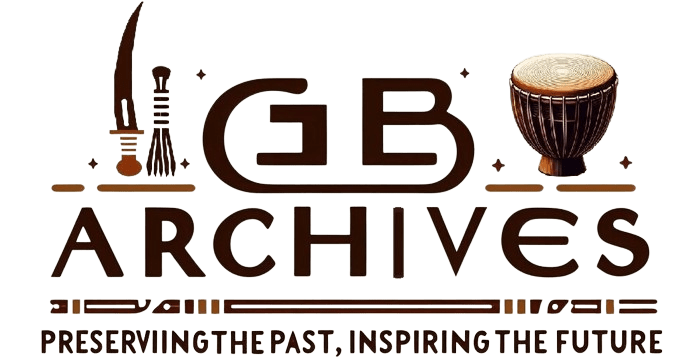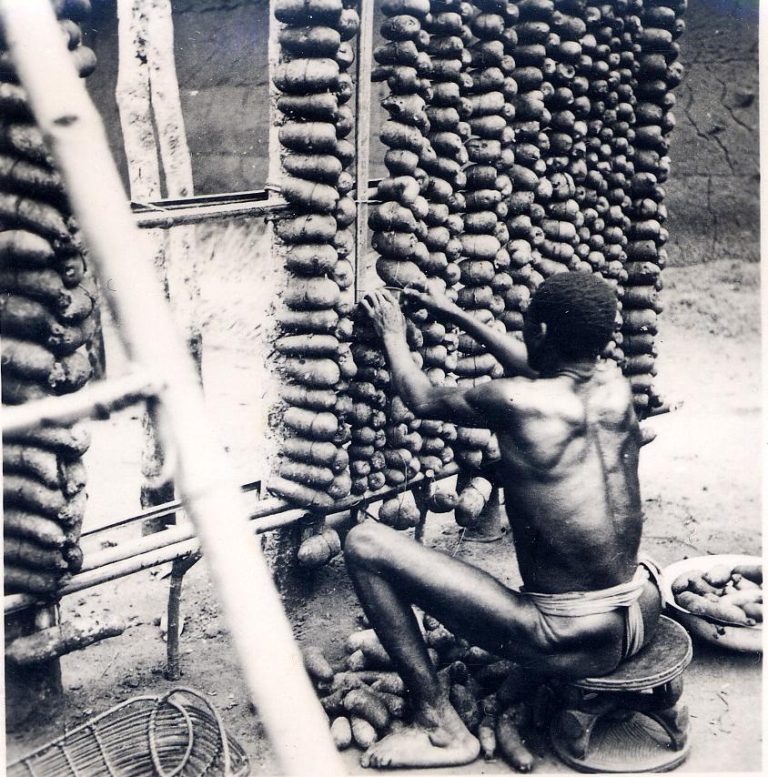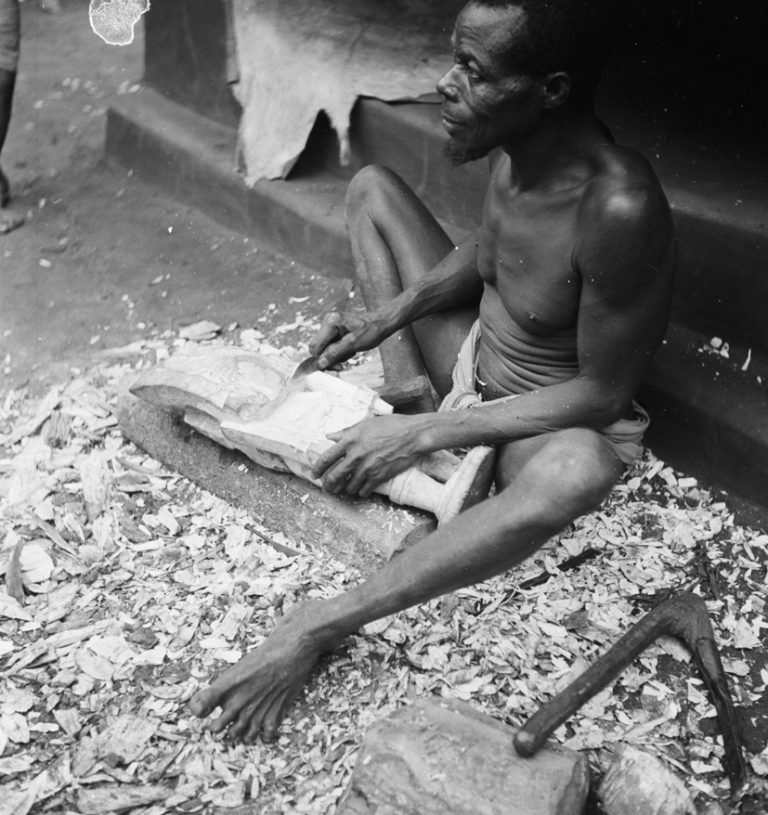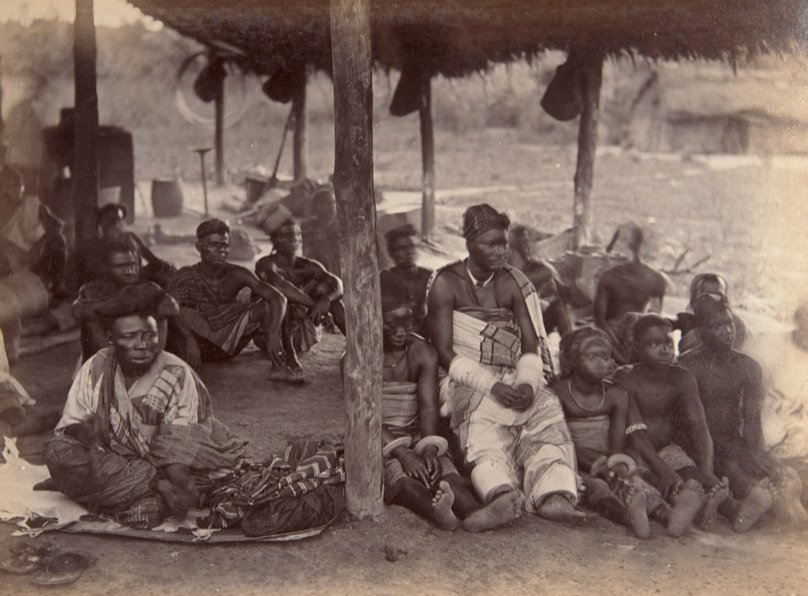
This photograph was taken by G. F. Packer in 1889 and is source from the Pitt Rivers Museum. It features a trader from Timbuktu and a rich trading woman, who who might be a member of the Onitsha women’s Otu Odu society, or an Omu, the female counterpart to the king, of Onitsha. The image offers a look into the world of Igbo commerce and the long-standing trade connections across West Africa.
In the late 19th century, the markets of West Africa were hubs of activity, where traders from diverse backgrounds converged to exchange goods, culture, and ideas. Among these traders were two intriguing figures captured in a photograph by G. F. Packer in 1889: a trader from Timbuktu and a rich trading woman. Let’s delve into their stories and explore the fascinating world of Igbo commerce.
Women and Trade in Onitsha
On the right side of the photograph, we encounter a woman adorned with large ivory anklets. She may well be a member of the Onitsha women’s Otu Odu society, also known as the “ivory group.” These female traders played a crucial role in the local economy. Their attire and accessories, including those distinctive ivory anklets, signaled their membership and status within the group. Remarkably, these anklets continue to be worn by modern-day Otu Odu members, bridging the gap between past and present.
It’s also possible that she is an Omu – a powerful female leader in Onitsha society. The Omu held a position akin to the king’s counterpart, overseeing commerce and marketplace activities. However, this leadership role extended beyond Onitsha; other Igbo communities west of the Niger River had their own Omu figures. These women were instrumental in maintaining trade networks and ensuring the flow of goods across regions.
Trans-Saharan Trade Routes and Cultural Exchange
The man on the left, identified as a trader from Timbuktu, adds depth to the photograph. His presence serves as a visual reminder of the ancient trade routes that connected the West African forest regions with the Sahel and beyond. The Trans-Saharan trade network facilitated exchanges of goods, ideas, and cultural practices. Timbuktu, renowned for its scholarship and commerce, played a pivotal role in this network.
Archaeological discoveries from Igbo Ukwu, dating back to the 9th century, corroborate the existence of long-distance trade. Among these finds are unique glass beads, some originating from as far away as Venice and India. These beads symbolize the extensive reach of trade networks. Horses from the Sahel were exchanged for coveted items like ivory from the southern regions, creating a dynamic exchange of wealth and culture.
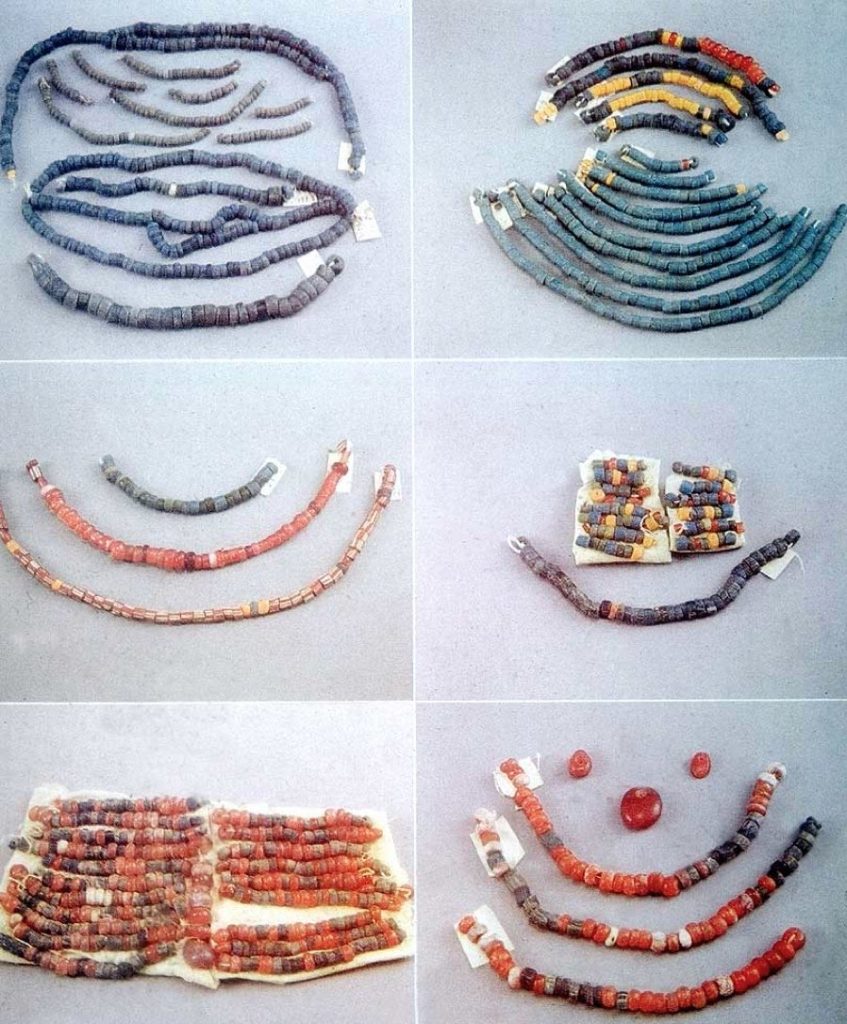
In the second photograph, we glimpse 1100-year-old glass beads – exquisite adornments for anklets or armlets. These beads were discovered in a burial chamber in the family compound of Richard Anozie in present-day Igbo Ukwu, Anambra State, Nigeria. Their intricate craftsmanship attests to the sophistication of Igbo artistry and the significance of personal adornment.
Market Governance and Influence
In Onitsha, the Queen and her senior councilors wielded authority over market operations. They ensured fair practices, settled disputes, and regulated prices. Before other traders displayed their wares, the Queen and her councilors had to be present. Foreign traders paid homage to the Onitsha market women, emphasizing the interconnectedness of trade and social structures.
This photograph encapsulates a rich tapestry of history, commerce, and female empowerment. As we reflect on these figures, let’s consider our own communities’ past – were there powerful female leaders like the Omu? Share your insights and stories in the comments below!
Explore Further
 Recommended Books
Recommended BooksTitle: Groundwork of the History and Culture of OnitshaAuthor: S. I BosahPublication Date: January 1, 1977Format: PaperbackPages: 224Language: EnglishItem Weight: 1.74 poundsASIN: B0000E8PSCPublisher: s.n Overview “Groundwork of the History and Culture of Onitsha” by S. I Bosah offers a thorough examination of the history and culture of Onitsha, a key cultural center in Nigeria. The author provides a detailed account of the city’s traditions, […]
 Recommended Books
Recommended BooksTitle: An African Popular Literature: A Study of Onitsha Market Pamphlets Author: Emmanuel Obiechina Publisher: Cambridge University Press Publication Date: August 31, 1973 ISBN-10: 0521200156 ISBN-13: 978-0521200158 Language: English Print Length: 256 pages Review: Emmanuel N. Obiechina’s “An African Popular Literature: A Study of Onitsha Market Pamphlets” is a pioneering work that captures the essence of a unique literary culture that flourished […]
 Recommended Books
Recommended BooksA Deep Dive into Onitsha’s Pre-Colonial Past “The King in Every Man” by Richard N. Henderson is a weighty tome (clocking in at 600 pages) offering a rich exploration of the Igbo people of Onitsha, Nigeria. The book focuses particularly on their society and culture in the centuries leading up to colonialism. While currently out […]
Discover more from Igbo Archives
Subscribe to get the latest posts sent to your email.

